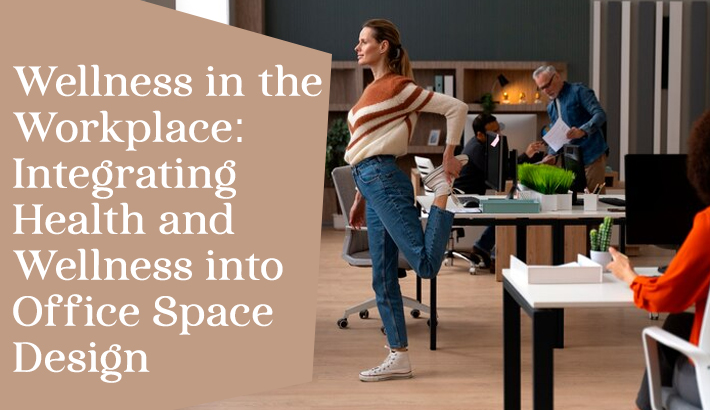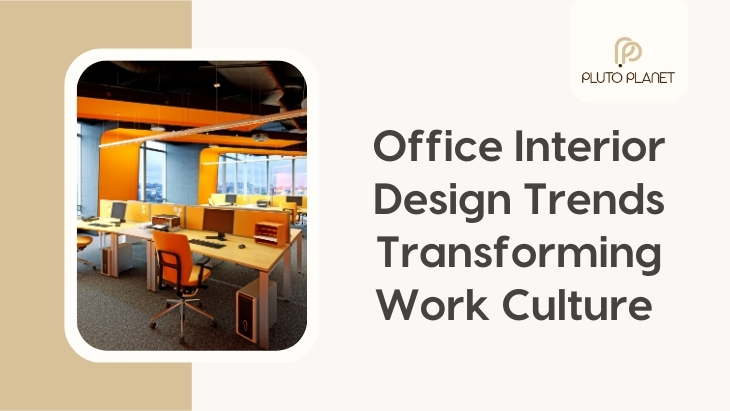Now a days and demanding work environment, the importance of workplace wellness cannot be overstated. Employers are increasingly recognizing the need to prioritize the well-being of their employees in order to enhance productivity and reduce employee turnover. Integrating health and wellness into office space design is a powerful way to achieve this. In this blog, we will explore the impact of office design on employee wellness and discuss strategies for creating a healthier and more supportive work environment. From ergonomics and natural elements to mental well-being and wellness programs, we will delve into the different aspects of designing a workplace that promotes physical and mental wellness. Join us as we discover the transformative power of a well-designed office space on employee well-being.
The impact of Office Design on Employee Wellness
Office design has a significant impact on employee wellness. One crucial aspect is ergonomic furniture. Providing employees with ergonomic workstations promotes proper posture, reduces muscle strain, and prevents repetitive strain injuries. Adjustable desks and chairs allow employees to customize their workspaces to their individual needs, enhancing comfort and productivity.
In addition to ergonomic furniture, proper lighting and noise levels are essential. Natural lighting has been shown to improve mood, productivity, and overall well-being. Incorporating windows and skylights, as well as using adjustable blinds or curtains, can optimize the amount of natural light in the office. Controlling noise levels is also crucial, as excessive noise can cause stress and distraction. Using soundproofing materials, acoustic panels, and designing separate spaces for quiet work or collaborative activities can help create a conducive and comfortable work environment.
By prioritizing ergonomics, optimizing lighting, and controlling noise, employers can create a work environment that supports employee wellness and enhances productivity. Such measures not only benefit the individuals but also contribute to overall organizational success.
Incorporating Natural Elements
Incorporating natural elements into our living and working spaces has numerous benefits that go beyond aesthetics. Adding plants and greenery not only enhances the visual appeal but also improves air quality by filtering out pollutants and increasing oxygen levels. Studies have shown that being surrounded by nature can reduce stress levels, boost mood, and increase productivity.
Designing spaces with access to natural light is another important aspect of incorporating natural elements. Natural light creates a sense of openness, stimulates productivity, and improves overall well-being. It has been linked to better sleep quality, faster healing, and increased Vitamin D production.
Creating outdoor areas or rooftop gardens expands our living and working spaces to the outdoors, providing a sanctuary for relaxation, reflection, and socializing. These areas also contribute to the overall environmental sustainability by reducing the heat island effect, minimizing stormwater runoff, and promoting biodiversity.
Incorporating natural elements into our spaces creates a holistic and balanced atmosphere that nourishes our physical and mental well-being. From improving air quality to promoting a connection with nature, these design choices bring numerous benefits to our daily lives.
Encouraging movement and physical activity
Encouraging movement and physical activity in the workplace is becoming increasingly important for maintaining employee health and well-being. One effective strategy is designing office layouts that promote movement. By creating open and collaborative spaces, employees are more likely to engage in active conversations and move around. Additionally, incorporating standing desks and active seating options, such as stability balls or adjustable chairs, can help employees stay engaged and prevent sedentary behavior. These options provide opportunities for individuals to stand, stretch, or engage their core muscles while working.
Another strategy is creating designated spaces for exercise or stretching. These areas can include yoga mats, resistance bands, or small exercise equipment. By providing employees with access to these resources, they are more likely to take short breaks throughout the day to engage in physical activity, thus enhancing blood circulation and reducing stress.
Overall, promoting movement and physical activity in the workplace can have numerous benefits, including increased productivity, decreased absenteeism, and improved employee morale. Implementing these strategies can encourage a healthier and more active work environment, leading to happier and more engaged employees.
Enhancing Mental Well-being through Office Design
Creating spaces for relaxation and mental recharge is an essential aspect of enhancing mental well-being through office design. This can be achieved by incorporating breakout areas or quiet zones within the office layout. These designated spaces provide employees with a retreat from their work environment, allowing them to unwind and recharge their mental energy.
In order to effectively promote relaxation, the office design should include comfortable furniture and calming colors. Ergonomic chairs, cozy couches, and soft lighting can create a soothing atmosphere and encourage employees to take short breaks throughout the day. Incorporating natural elements such as plants or water features can also have a positive impact on mental well-being.
In addition to physical spaces, offices can further prioritize mental well-being by providing amenities like meditation rooms or wellness areas. These areas can be used for activities such as yoga, mindfulness exercises, or even short naps. These spaces allow employees to take a proactive approach to their mental health by engaging in practices that promote relaxation, stress reduction, and overall well-being.
Overall, the intentional design of office spaces that prioritize relaxation and mental recharge can greatly contribute to enhancing employees' mental well-being. By creating environments that encourage breaks, provide comfort, and support various wellness practices, employers can foster a positive work atmosphere that promotes mental wellness and productivity.
Implementing wellness Programs and Initiatives
Implementing wellness programs and initiatives in the workplace can greatly benefit employees by promoting their overall health and well-being. One way to encourage healthy eating habits is to design well-equipped kitchen areas that are stocked with nutritious options, making it easier for employees to access healthy snacks and beverages. Additionally, organizing workplace wellness challenges, such as step competitions or healthy recipe contests, can foster a sense of community and motivate employees to make healthier choices.
Mental health support and resources are crucial components of a comprehensive wellness program. Designing spaces for confidential conversations allows employees to seek support when needed. Partnering with mental health professionals can provide employees with access to counseling or therapy services. Offering mindfulness or stress reduction programs, such as meditation or yoga classes, can help employees manage their mental and emotional well-being.
Employee fitness and well-being programs are also important. Allocating space for fitness classes or gym equipment creates opportunities for employees to engage in physical activity. Organizing wellness workshops or seminars that cover topics like nutrition, exercise, and stress management can educate employees and empower them to make healthier choices. Introducing incentives for physical activity, such as rewards for meeting fitness goals, can further motivate employees to prioritize their well-being. Overall, implementing these initiatives can create a positive and supportive work environment that promotes employee wellness.
Conclusion
In conclusion, office design plays a crucial role in promoting employee wellness. By integrating ergonomic furniture, optimizing lighting and noise levels, incorporating natural elements, encouraging movement and physical activity, enhancing mental well-being through design, and implementing wellness programs, employers can create a work environment that supports the physical and mental well-being of their employees. Prioritizing workplace wellness not only leads to healthier and happier employees, but also contributes to increased productivity, reduced employee turnover, and overall organizational success. So, let's embrace the transformative power of a well-designed office space and create a healthier and more supportive work environment for all.









Leave a reply